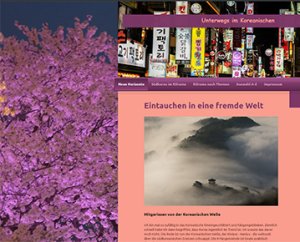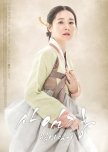Visually stunning with a truly poetic story. Insights into the early 16th century art included
"Saimdang, Memoir of Colors" is an excellent KDrama with historically impressive dimensions. The focus here is on the legendary artist Shin Saimdang, whose head is also depicted on the 50,000 won note today. The KDrama pays tribute to the great artist and also pays tribute to her roles as a devoted mother and virtuous, yet uncompromisingly progressive woman. The focus is on a time and space transcending, tragic love story - fictitious... or at least not historically documented. (But why should´t it have happened in this way or another? ... :-)
----------------- SIDE NOTE --- Shin Saimdang (1504 -1551) ---
... was a painter, calligrapher and poet who was valued in her time and far beyond. Since her father had no son, he gave her (rather unorthodox for a girl) an education and training in literature, poetry, calligraphy, embroidery and painting. Her works as a painter are characterized by their particularly sensitive view of nature and its subtle, sensitive representation. Today only about 40 paintings in Indian ink and mineral colors can be directly assigned to Saimdang. However, it is suspected that many more works of art have survived, although they are not clearly signed as her works. Shin Saimdang has also gone down in history as the ideal of the good mother. She had five sons and three daughters, some of whom also inherited their mother's talent. One of her sons is the even more famous Neo-Confucian scholar and politician Yul-gok Yi I.
-----------------------------------------------------------------------------
In addition, as far as the perspective of traditional art is concerned, the special focus of this KDrama is the nature of the world of animals, plants and mountains. Actually, it could be mentioned here, that South Korea is characterized by several mountains and 21 national parks on more than two thirds of the country's surface. This KDrama aesthetically focuses on the spiritually legendary mountain region around the Geumgangsand - The Diamond Mountain. It probably got its name in connection with the Diamond Sutra of Buddhism. It was a center of Korean Buddhism, traces of which can be dated back to the 1st century. At the beginning of the 20th century there were still more than 40 active monasteries in the region. In any case, the mountain world plays in several respects an important role in this gripping historical drama.
Special dynamics arise through the play with intertwining time and space. There are two plots. One is set in 2017, the other in the early 16th century during the Joseon era. One follows a young art historian writing her PhD thesis on artist An Gyeon's work 'Geumgangsando'. The other follows historical Shin Saimdang through the first 3-4 decades of her passionate yet virtuous life. Parallel to the art historian's research and struggle with it, that is at the same time enhanced and endangered by Saimdang´s diary, insights on the artist´s eventful life are revealed. Both storylines are quite exciting in their own way. Particularly charming: people from Saimdang's time-line seem to have reincarnated in Seoul in 2016 and are once more somehow connected to each other... Surprisingly, the fulcrum where the timelines converge is Tuscany in Italy.
This extraordinary and visually stunning KDrama offers a truly poetic, heart-rending story, added with interesting insights into the special aesthetics and sensitivity of contemporary Korean art of the early 16th century, as well as the paper production craftmanship of that time. It is rounded by an atmospheric soundtrack and, last but not least, actors who are as if absorbed in their roles. At last, there is plenty of makjang, too.
Taking everything into account, the story is effortlessly captivating over 28 episodes.
At the end I was left in bewilderment, yet to some extend somehow surprisingly satisfied, too.
----------------- SIDE NOTE --- Shin Saimdang (1504 -1551) ---
... was a painter, calligrapher and poet who was valued in her time and far beyond. Since her father had no son, he gave her (rather unorthodox for a girl) an education and training in literature, poetry, calligraphy, embroidery and painting. Her works as a painter are characterized by their particularly sensitive view of nature and its subtle, sensitive representation. Today only about 40 paintings in Indian ink and mineral colors can be directly assigned to Saimdang. However, it is suspected that many more works of art have survived, although they are not clearly signed as her works. Shin Saimdang has also gone down in history as the ideal of the good mother. She had five sons and three daughters, some of whom also inherited their mother's talent. One of her sons is the even more famous Neo-Confucian scholar and politician Yul-gok Yi I.
-----------------------------------------------------------------------------
In addition, as far as the perspective of traditional art is concerned, the special focus of this KDrama is the nature of the world of animals, plants and mountains. Actually, it could be mentioned here, that South Korea is characterized by several mountains and 21 national parks on more than two thirds of the country's surface. This KDrama aesthetically focuses on the spiritually legendary mountain region around the Geumgangsand - The Diamond Mountain. It probably got its name in connection with the Diamond Sutra of Buddhism. It was a center of Korean Buddhism, traces of which can be dated back to the 1st century. At the beginning of the 20th century there were still more than 40 active monasteries in the region. In any case, the mountain world plays in several respects an important role in this gripping historical drama.
Special dynamics arise through the play with intertwining time and space. There are two plots. One is set in 2017, the other in the early 16th century during the Joseon era. One follows a young art historian writing her PhD thesis on artist An Gyeon's work 'Geumgangsando'. The other follows historical Shin Saimdang through the first 3-4 decades of her passionate yet virtuous life. Parallel to the art historian's research and struggle with it, that is at the same time enhanced and endangered by Saimdang´s diary, insights on the artist´s eventful life are revealed. Both storylines are quite exciting in their own way. Particularly charming: people from Saimdang's time-line seem to have reincarnated in Seoul in 2016 and are once more somehow connected to each other... Surprisingly, the fulcrum where the timelines converge is Tuscany in Italy.
This extraordinary and visually stunning KDrama offers a truly poetic, heart-rending story, added with interesting insights into the special aesthetics and sensitivity of contemporary Korean art of the early 16th century, as well as the paper production craftmanship of that time. It is rounded by an atmospheric soundtrack and, last but not least, actors who are as if absorbed in their roles. At last, there is plenty of makjang, too.
Taking everything into account, the story is effortlessly captivating over 28 episodes.
At the end I was left in bewilderment, yet to some extend somehow surprisingly satisfied, too.
Was this review helpful to you?


 9
9 39
39 15
15
















